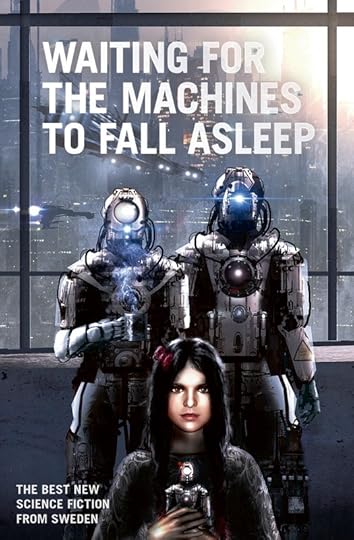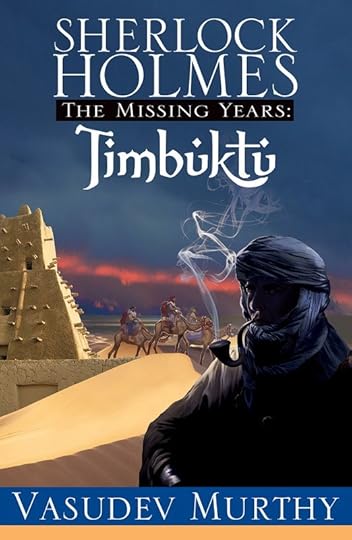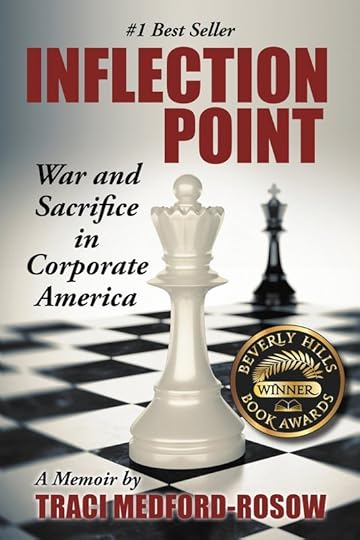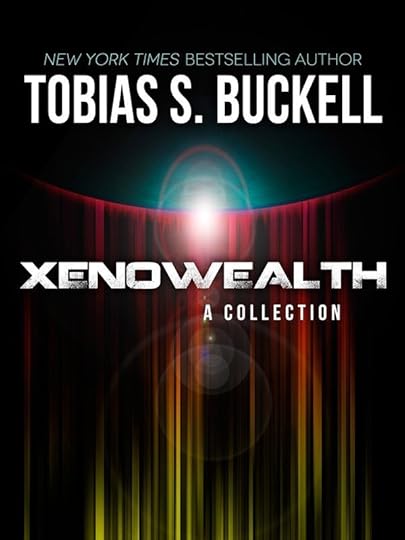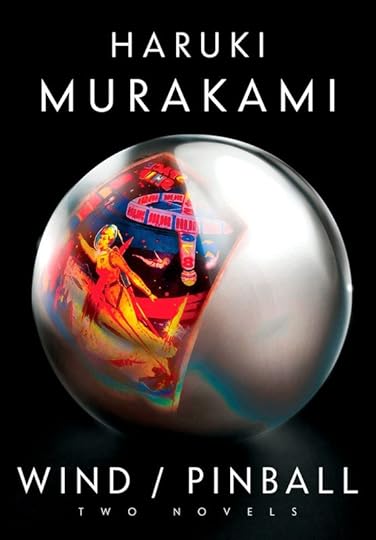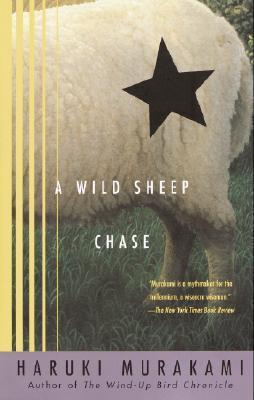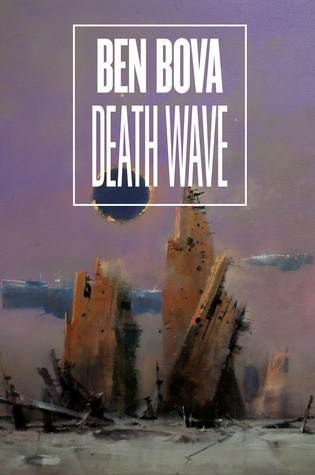Alex C. Telander's Blog, page 14
July 1, 2016
King Capsule No. 2

Welcome back. I trust you enjoyed your first course of the particular bloody and terrifying horror that is Stephen King. Since you have returned, you are clearly wanting more. Well then, without further ado, here is your next capsule, featuring a larger dose this time.
Capsule No. 1 can be found here.
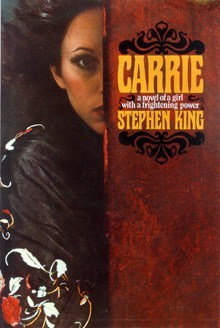
Carrie (1974): Stephen King’s debut novel that went on to become a bestseller has become part of lore and urban legends and part of the American lexicon. Carrie White wants nothing more than to have a normal high school experience, but high school is never like that. Plus she has a religious zealot for a mom who has controlled her in every way since the day she was born. But Carrie has a secret: she has a special ability that no one else does: she can do things with her mind. And maybe it seems like things might be okay when a cute guy asks her to the prom and gives her a chance to have the perfect night. But this IS a Stephen King novel after all, even if it’s his first, so nothing is going to go the way it’s planned to go.
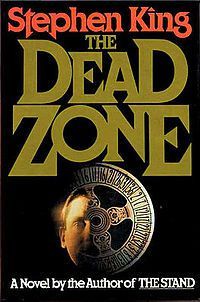
The Dead Zone (1979): Continuing on the theme of extra-sensory perception or ESP we have the story of Johnny Smith who had a bad ice skating accident when he was six years old and now he can kind of predict things that are going happen, then when he’s in a bad car accident as an adult and spends four years in a coma, he returns to the world with the ability to see what is to come. It is both a blessing and a curse. The good thing is you know when things are going to happen and you can get out of the way and protect yourself; the bad thing is all those other people that are in the way and need saving.
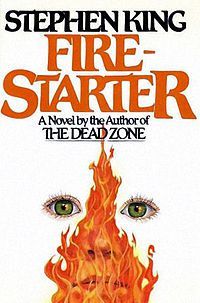
Firestarter (1980): Rounding out King’s ESP trilogy is the incendiary Firestarter. Andy McGee and Vicky Tomlinson participated in a drug experiment when they were younger, but unbeknownst to them it was orchestrated by a secret government group known as The Shop. The child they have, Charlie, develops the uncanny ability to set things on fire. Some things she makes just burst into flame, other things she can make explode into a raging pyre. But she’s also a scared, confused little girl. The Shop wants to get her so they can study her and do experiments on her and find out how her powers work and how they can harness them, regardless of the fact that she is a child. But her dad Andy isn’t going to let them get within a mile of her; so now the two are on the run from a clandestine government body that has limitless resources.
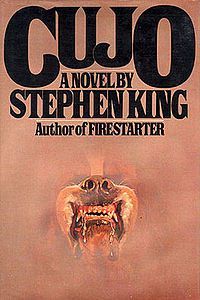
Cujo (1981): This is the story about a dog named Cujo. This dog contracts rabies from a bite and turns rabid. Donna Trenton and her young son, Tad, come up to the old farm one day and discover Cujo who is looking to sink his teeth into anything. And here we have King’s powerful, moving story about a mother and child fighting to survive against a terrible beast. But it is also the story of a special kind of small town that could allow an animal to turn rabid and begin tormenting two of its citizens.
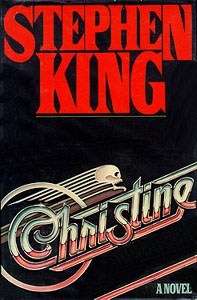
Christine (1983): Arnold Cunningham is your classic Geek who is covered in zits and dreams of being close to a girl, let alone touching one. Until the day he sees the 1958 Plymouth Fury named Christine. It’s the first female he ever falls in love with, and the last, and once he buys the vehicle his life changes completely. Whether it’s for the better or the worse, is a matter of opinion, depending on who you’re asking. But all of a sudden he’s looking better, has a gorgeous girl on his arm, and everything seems to be going his way. Except for this close friend. And the fact that people who get in his way tend to end up dead all of a sudden. But who’s behind it? The car? Now that’s just crazy talk.
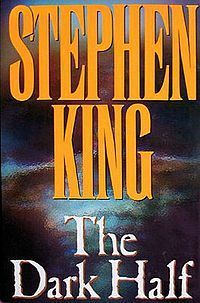
The Dark Half (1989): We all have our other side, our dark half. Stephen King had it with his pseudonym Richard Bachman. So when successful author Thad Beaumont decides he’s written his last book as Richard Stark (who got him most of his money), he stages a PR set and puts his pseudonym to rest with a fake gravestone. But once everyone leaves, something crawls out of the ground where that gravestone is. It’s coming after Thad. It doesn’t want him to stop. It wants him to write another Richard Stark book. Whatever it takes. Even if he has to write it in blood.


June 29, 2016
“Waiting for the Machines to Fall Asleep” edited by Peter Öberg (Affront Publishing, 2015)
When people think of Sweden a number of cliche thoughts and preconceived notions come to mind. When they think of Swedish authors, they are likely two that come to mind: Stieg Larsson of The Girl with the Dragon Tattoo and John Ajvide Lindqvist of Let the Right One In. One is a thriller writer, the other horror, but what about speculative fiction?
In Waiting for the Machines to Fall Asleep readers get to experience the genres of science fiction and fantasy in this fascinating anthology from the land of the midnight sun. 26 stories (some quite long) cover the gamut of the genres, with plenty of dystopian worlds spelling doom and gloom. Others will take you to other worlds, others to the future, and others to a very familiar place where things just aren’t quite right.
“Melody of the Yellow Bard” is an unusual story about wormholes and how what you find on the other side isn’t always that great. “The Thirteenth Tower” is a moving tale set in a destroyed world where those within it learn of how good times were before. “The Road” is of an alternate world featuring a female marshal employed by the Road Council, charged with keeping everything in order.
While the dystopian future is a common theme with a few of the stories, there are many others on diverse and unusual subjects, some short some long, providing a great smorgasbord (sorry, I had to) of stories for interested readers.
Originally written on July 9, 2015 ©Alex C. Telander.
To purchase a copy of Waiting for the Machines to Fall Asleep from Amazon, and help support BookBanter, click HERE.


June 27, 2016
“The Grand Hotel” by Scott Kenemore (Talos, 2014)
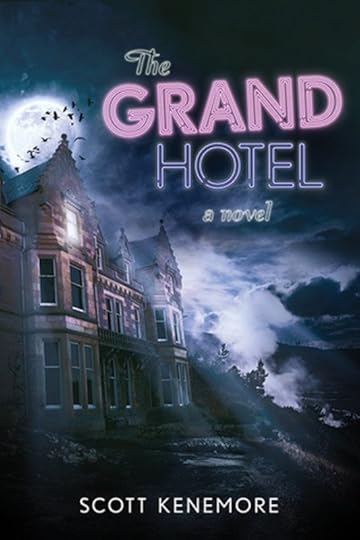



Welcome to the Grand Hotel where things are never as they seem. And as the Eagles said: “You can check out any time you like, but you can never leave.” The horrors that happen every day here are not quite like other horrors, they’re more twisted and incarnate, each with their own bizarre nature. There’s the strange “person” in the bed who appears to have been dead for quite some time, but someone keeps paying his hotel bill, and a whole host of other long-staying residents.
The desk clerk leads a group of visitors around, introducing them to these eccentric and at times terrifying guests, but one of the visitors is a little girl who seems to be something else the desk clerk can’t quite understand.
The Grand Hotel is a series of eleven stories linked together with a guided narration and tour via the desk clerk, who may in fact be the devil. The writing and style are a little jarring and unusual to begin with, forcing the reader to take a little while to get used to, but the deeper the reader gets into the book, the more interesting the stories get.
Originally written on January 28, 2015 ©Alex C. Telander.
To purchase a copy of The Grand Hotel from Amazon, and help support BookBanter, click HERE.


June 24, 2016
“Sherlock Holmes, The Missing Years: Timbuktu” by Vasudev Murthy (Poisoned Pen Press, 2016)
When the eminent Sherlock Holmes in an altercation with his nemesis Moriarty plunged to his death at Reichenbach Falls in 1891, the world was changed forever. It was changed again when Holmes resurfaced, alive and well, in 1894, as he continued to solve cases that left New Scotland Yard baffled. But what happened during those three “missing” years?
Vasudev Murthy tells of one chapter in Holmes’s life in Sherlock Holmes, The Missing Years: Tumbuktu, as recounted by his close and trusted friend, Dr. Watson. This is the story of a most unique document created long ago that was purported to possess strange and monumental powers. Marco Polo supposedly made a rubbing of a brass disc found in the libraries of Kublai Khan.
But the document was divided in half centuries ago to protect those from the information it contained. Holmes now has half of this document secreted in his possession and seeks to discover where the remaining half is and put this riddle to rest.
While this novel doesn’t feel exactly like a work penned by Arthur Conan Doyle, it is nevertheless and fun and adventurous story taking the reader across the globe and back through time on a journey they won’t soon forget.
Originally written on March 1, 2016 ©Alex C. Telander.
To purchase a copy of Sherlock Holmes, The Missing Years: Timbuktu from Amazon, and help support BookBanter, click HERE.


June 22, 2016
“Inflection Point: War and Sacrifice in Corporate America” by Traci Medford-Rosow (Pegasus Books, 2015)
Inflection Point: How the Convergence of Cloud, Mobility, Apps, and Data Will Shape the Future of Business examines how businesses can leverage the trends occurring, and changing, every day in the information technology (IT) field. It examines the success and failures of businesses impacted by inflection points. Written in terms the average layman can understand, Inflection Point is a fascinating look at the birth and transformation of IT trends in the business world.
I couldn’t help but compare Inflection Point to Malcolm Gladwell’s The Tipping Point, which examines trends and why they become popular in society and popular culture. In much the same way, Scott uses former Intel CEO Andy Grove’s definition of an inflection point: “an event or a series of interrelated events that result in a significant change in the progress of a company, an industry, a sector, an economy, or even a nation,” which is very similar to Gladwell’s definition of a tipping point: “that magic moment when an idea, trend, or social behavior crosses a threshold, tips, and spreads like wildfire.” While Gladwell examines this phenomena from a sociological perspective, Stawski examines it from an IT and business perspective.
Scott breaks down how companies can anticipate inflection points within their respective industries and how they can stay ahead of the trend wave. Additionally, he provides real-world examples of businesses that have succeeded or failed, based on their ability to recognize and adapt to inflection points. He highlights steps taken by companies whose CEOs or COOs have embraced changes in technology and taken their companies to the next level while their competition floundered and failed.
He provides a detailed explanation and description of cloud computing and encourages companies not to worry about ‘how’ it works, but, instead, focus on the fact it works and what the expected outcome should be. This is good advice for the average person as well as the CEOs and COOs of the business world. You don’t have to understand combustible engines to get in your car and drive.
Scott also does a very good job of addressing the issue of security with regard to cloud computing. In the age of compromised data, when everyone is affected by the IT breaches of Target and the government’s Office of Personnel Management, security should be at the forefront of everyone’s mind. He highlights that the majority of data breaches have occurred against businesses employing the traditional IT model. By breaking down the different cloud computing models, he explains how security can be leveraged at each level of useage.
Although written from a business perspective, Inflection Point is an extremely useful analysis of changing IT trends for the average person. Scott uses simple, easy-to-understand language to explain the current trends within the IT enterprise – cloud computing, Software as a Service, and Big Data. He incorporates real-life experiences from his personal life as a hobby sailor, as well as his professional life as a consultant, to draw analogies between how we use IT in our personal life and how businesses can use IT to further their interests.
First published in the San Francisco Book Review.
Originally written on April 20, 2016 ©Alex C. Telander.
To purchase a copy of Inflection Point from Amazon, and help support BookBanter, click HERE.
June 20, 2016
“Xenowealth: A Collection” by Tobias S. Buckell (Xenowealth Books, 2016)
Bestselling author Tobias S. Buckell has penned a number of novels in his Xenowealth universe, such as Crystal Rain, Ragamuffin and Sly Mongoose. In Xenowealth: A Collection, Buckell collects all of the short stories he has written over the years and published in magazines and anthologies, bringing them together in this self-published volume. Here readers get to see the beginning stories of the unlikely, mechanized hero Pepper as he goes around looking to make enough money to survive and get by, but also to help those in need as much as he can. At first he seems like a tough-as-nails mercenary only looking to help out himself, but readers soon learn there is more to this man than his mechanically enhanced exterior.
Pepper makes an appearance in each of the stories in this collection, but the rest of characters – some readers will recognize from Buckell’s Xenowealth novels – are developed, fascinating people of color that readers soon care for and want to do well. But in this tough world, it is often hard to get by.
Xenowealth: A Collection is a great diving board for new readers to delve into this world and quickly get hooked. Buckell self-published the collection through a Kickstarter campaign wanting to give readers – fans old and new – a chance to read these thrilling stories.
Originally written on March 3, 2016 ©Alex C. Telander.
To purchase a copy of Xenowealth: A Collection from Amazon, and help support BookBanter, click HERE.


June 17, 2016
“Wind/Pinball” by Haruki Murakami (Knopf, 2015)
Haruki Murakami is the well known international bestselling Japanese author of such books as Norwegian Wood, The Wind-up Bird Chronicle and Kafka on the Shore. English-language readers discovered Murakami for the first time with his “debut” book A Wild Sheep Chase, but this was in fact his third book. In 1978, after an unusual experience, Murakami decided he wanted to write a novel. After some interesting forays, he eventually found his unique voice and wrote his first two (short) books which have been translated into English for the first time: Hear the Wind Sing and Pinball, 1973.
The first novella features an unnamed narrator recounting an unusual series of experiences in the classic Murakami style. He’s home from college for the summer and spends a lot of his time going to J’s bar, chatting with the barman and drinking beer with his wealthy friend “Rat.” He also shares stories about his relationship with a 9-fingered woman. In the second novella, we have the same narrator later in life, done with college, now working as a translator for a successful translation business. He’s involved with identical twins who are very unusual; they just showed up on his doorstep one day and moved in with him. And then he becomes obsessed with tracking down a spaceship pinball game he played in college.
Overall, the stories are a little rough and feel unfinished or perhaps more like early drafts. Nevertheless, Murakami’s voice and style is there right from the beginning, along with his unique unusualness that draws in and hooks so many readers. New readers may want to try one of his more popular novels, while fans will enjoy these stories and early examples of the writer they enjoy reading.
Originally written on October 29, 2015 ©Alex C. Telander.
To purchase a copy of Wind/Pinball from Amazon, and help support BookBanter, click HERE.


June 15, 2016
“A Wild Sheep Chase” by Haruki Murakami (Vintage, 2002)
One of Murakami’s early novels, A Wild Sheep Chase, is a classic example of what this unique author has to offer. From weird title to the outlandish but fascinating storyline, this book is a great starting point for those wanting to start reading this well renowned author. The book is also referred to as the third book in the “Trilogy of the Rat,” as Murakami’s first two novellas, Hear the Wind Sing and Pinball, 1973 (which were recently published in English for the first time) features a couple of the characters from these original stories, but are not required reading to get the full enjoyment out of A Wild Sheep Chase.
An advertising executive in his twenties who works with a partner at an advertising firm that is doing relatively well for itself receives a postcard from an old friend and ends up using the interesting image as part of an advertising campaign. The image depicts a pastoral scene with sheep, but there is one particular sheep in the picture that is a unique species with a star on its back.
Then a man in black pays him a visit and puts the pressure on, giving him an ultimatum: he will have to locate this sheep, or face some severe consequences that could cause the end of the business and his livelihood. Thus begins the man’s unusual quest to find this special sheep, which will take him to the snow mountains of Northern Japan. He will meet plenty of strange people along the way – as is Murakami’s style – as well as an old friend who he asks for advice, but is told he must find his own truth.
Every Murakami novel has a silver living that can be taken away from it; A Wild Sheep Chase is no different from the rest. The important thing is that silver lining is specific to each individual reader.
Originally written on March 25, 2016 ©Alex C. Telander.
To purchase a copy of A Wild Sheep Chase from Amazon, and help support BookBanter, click HERE.


June 13, 2016
“Death Wave” by Ben Bova (Tor, 2015)
In Ben Bova’s previous standalone novel, New Earth, Jordan Kell traveled to a distant planet and found life that had been created by an advanced form of being akin to that of humans. They learned a lot from these “aliens” with their advanced technologies and way of life. Now Kell has traveled back to Earth with one of the aliens who is his new wife to show her off to the world and let them know of this new Earth.
But there is also something far more important to bring to the attention of the people of Planet Earth. A death wave is traveling through the universe, composed of lethal gamma radiation; it destroys everything in its path and wipes out all life. It will eventually reach Earth, millennia from now, but in the meantime it will wipe out many intelligent civilizations.
Kell launches a campaign to build starships to help save these civilizations, for the people of New Earth have the technology to save them but not the ability. But he must contend with a world government and a leader at its head who is essentially running a world dictatorship.
Like his previous books, Farside and New Earth, Death Wave features short chapters and conflicts get quickly and relatively easily solved. This is not deep, hard, complex science fiction, but a fun story that keeps you turning the page wanting to know what happens next.
Originally written on October 28, 2015 ©Alex C. Telander.
To purchase a copy of Death Wave from Amazon, and help support BookBanter, click HERE.


June 10, 2016
“James Herriot’s Animal Stories” by James Herriot (St. Martin’s Press, 2015)
If you’ve never read any James Herriot (as I hadn’t until I read this delightful book), James Herriot’s Animal Stories is a perfect little volume to begin with, as it’s not too long but offers a very entertaining selection of Herriot’s best and most popular stories.
From the very beginning, the reader is entranced and wrapped up in Herriot’s easy conversational tone about the beautiful Yorkshire dales. He describes the scenery with such life that the reader is automatically transported to northern England in their imagination. While the first few stories involve Herriot sticking his hand up a cow, pig and sheep, he imbues the stories with such enjoyment in what he does, as well as appreciating the reward in helping a suffering animal.
The stories cover the whole farm with pigs, lambs, horses, cows, and even features a moving story about an old dog with eye problems who Herriot performs a simple operation on and the animal is able to spend the rest of his days seeing clearly. The stories are moving and heartfelt, making it easier to understand why Herriot’s writing and stories continue to be so popular.
Originally written on July 29, 2015 ©Alex C. Telander.
To purchase a copy of James Herriot’s Animal Stories from Amazon, and help support BookBanter, click HERE.



